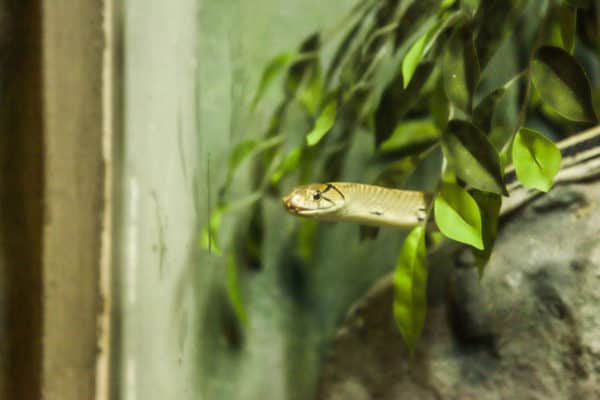Unlike many warm-blooded animals, snakes don’t actually hibernate in the winter. Instead, snakes go into a state known as brumation where snakes become less active and their metabolism slows down tremendously. Brumation is similar to hibernation in that snakes will sleep for long periods of time. They will, however, wake up to forage for food and water and if a sudden warm snap occurs and temperatures rise for a few days at a time. When the weather cools back down, they will go back into their brumation state once again. Brumation can begin anytime from September to December and last until March or April.
Because snakes are cold-blooded, they can’t regulate their body temperatures like warm-blooded animals can. When cold weather hits, snakes must find shelter from the temperatures by burrowing in holes or caves, under logs or rocks, in tree stumps, or by making their way into basements, crawlspaces, garages, barns, sheds, wood piles, and even car engines. Snakes are very quiet and experts at hiding so their presence often goes unnoticed until they are disturbed.
Now that you know where snakes might be hiding this winter, the next question is how to keep snakes away? Here are some tips on how to prevent snakes from hiding out on your property.
- Landscape Management: Rodents are attracted to tall grass and overgrown landscaping. By minimizing these unkempt areas on your property, rodent populations are reduced which, in turn, helps keep snakes who feed on these rodents away. Keep grass mowed and landscaping well maintained. Cut shrubbery regularly and trimmed away from your home and other buildings.
- Storage: Snakes will look for any area of cover that will protect them from the elements without being disturbed. They will often seek shelter in wood piles or other piles of debris on your property. Make sure that these stacks are kept at least 12″ off the ground and, if possible, stored in sealed containers.
- Wildlife Exclusion: Snakes can’t chew to create openings into your home so they take advantage of any openings that are already present, such as gaps near pipes, damaged window and door screens, open windows and doors, damaged soffits, crawlspaces that aren’t enclosed, and through cracks in the exterior of buildings. Carefully examine all of your property and seal any potential openings that snakes may utilize.
- Food Sources: Snakes are known to feed on rodents, lizards, and frogs. Eliminate these pests and you will help eliminate snakes. Get rid of any areas of standing water on your property. Keep landscaping well maintained to deter rodents. Inside your home, make sure to keep areas clean especially kitchens and pantries where spilled food and crumbs are readily available for rodents to feed on.
- Professional Service: Depending on the species, snake removal can be dangerous to undertake on your own. It is usually in your best interest to contact a professional wildlife control company when dealing with a snake issue. Establishing a regularly scheduled service plan can help identify pest risks before they become an issue. These professionals can also identify any areas where wildlife exclusion services may be beneficial and establish a comprehensive pest control program.
You May Also Be Interested In:
Mosquitoes Active Through Fall
How Can Your Business Benefit From Commercial Pest Control?

